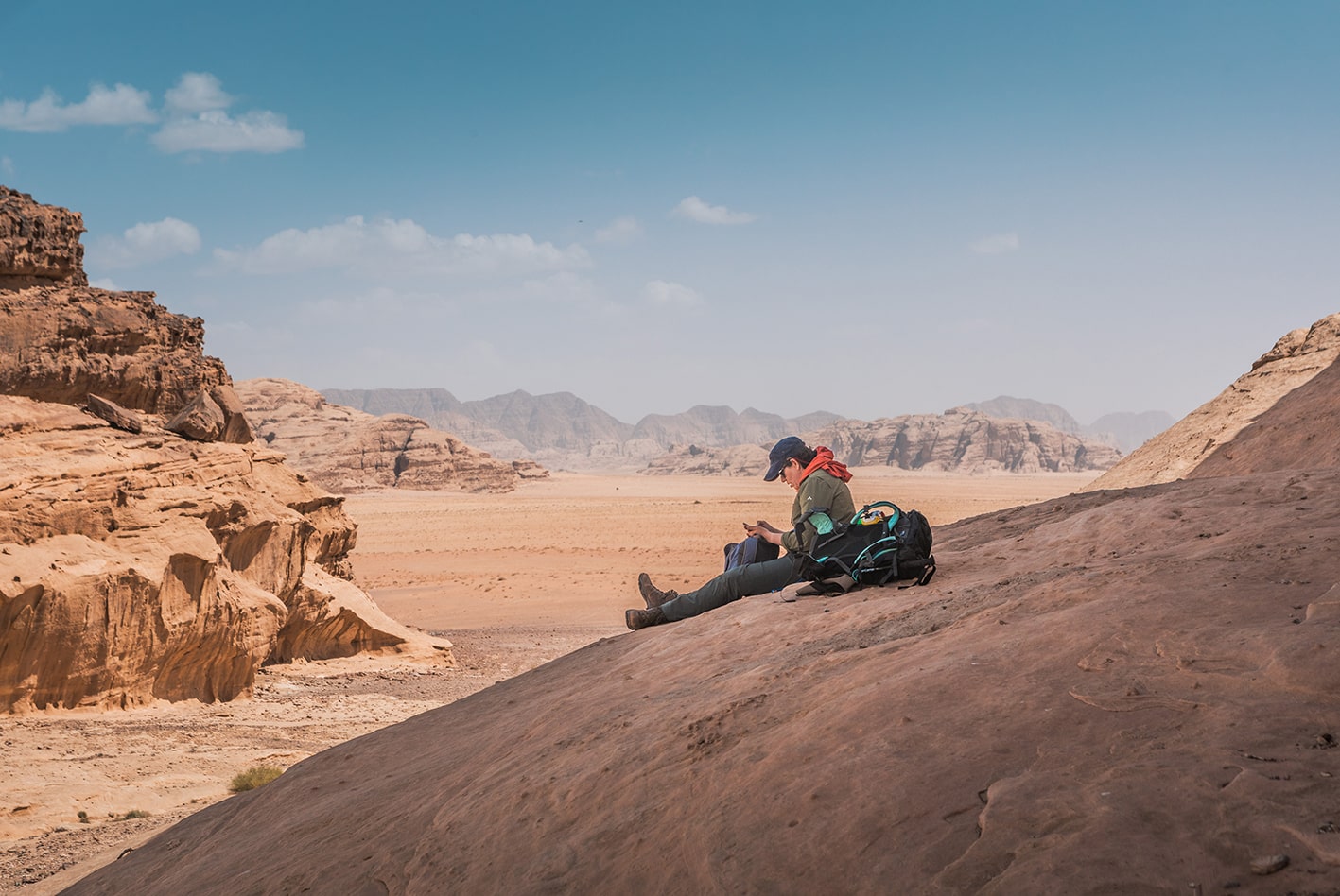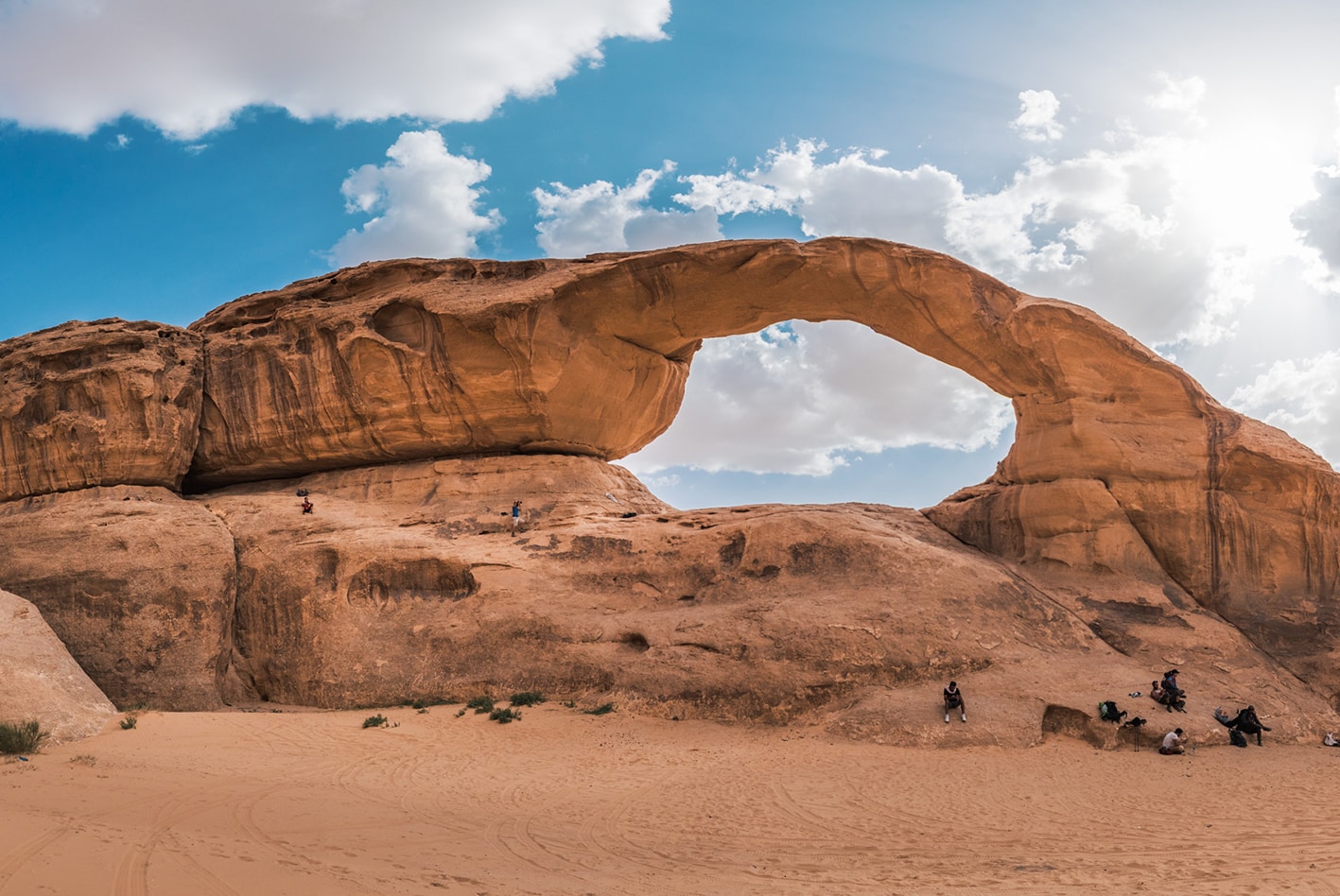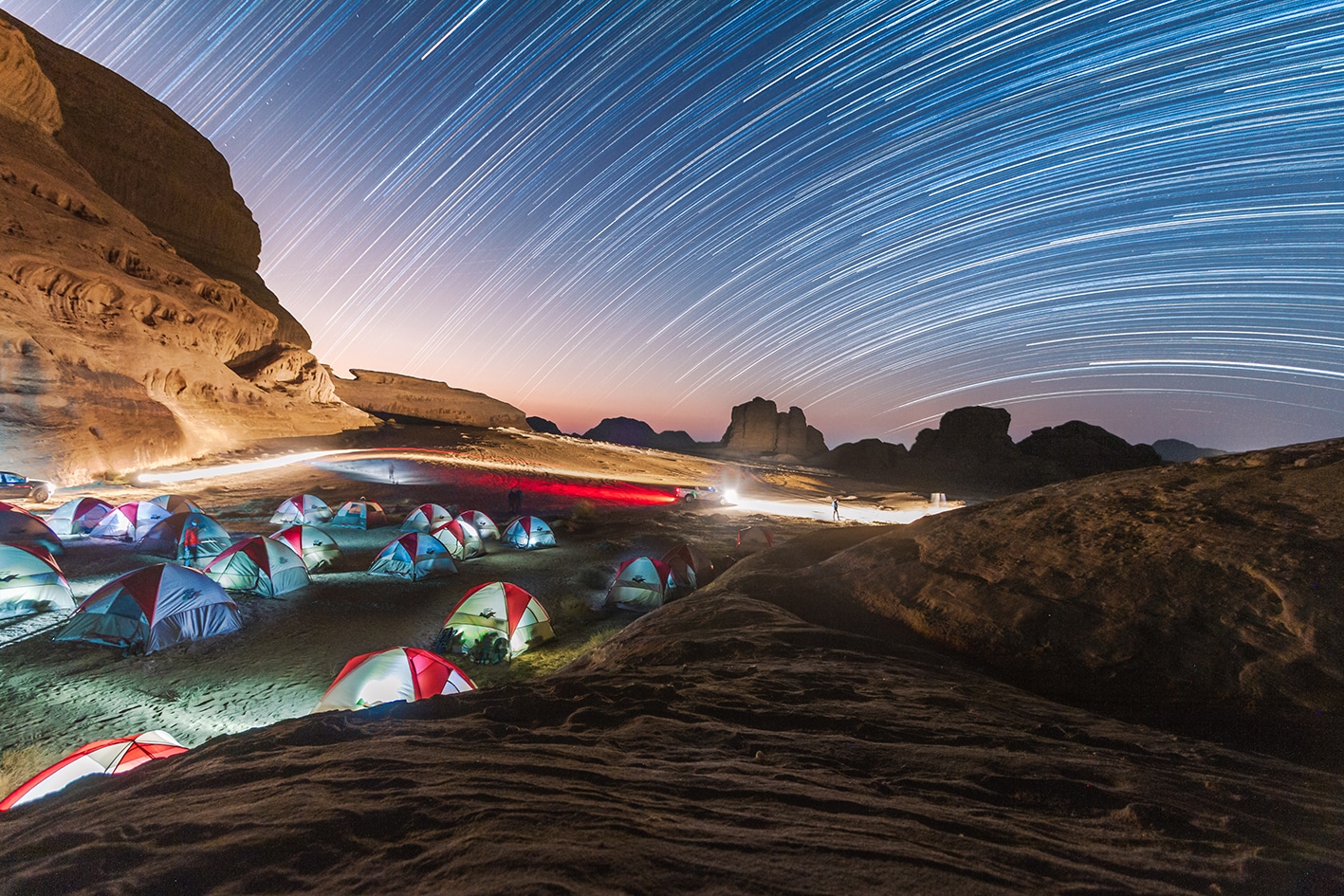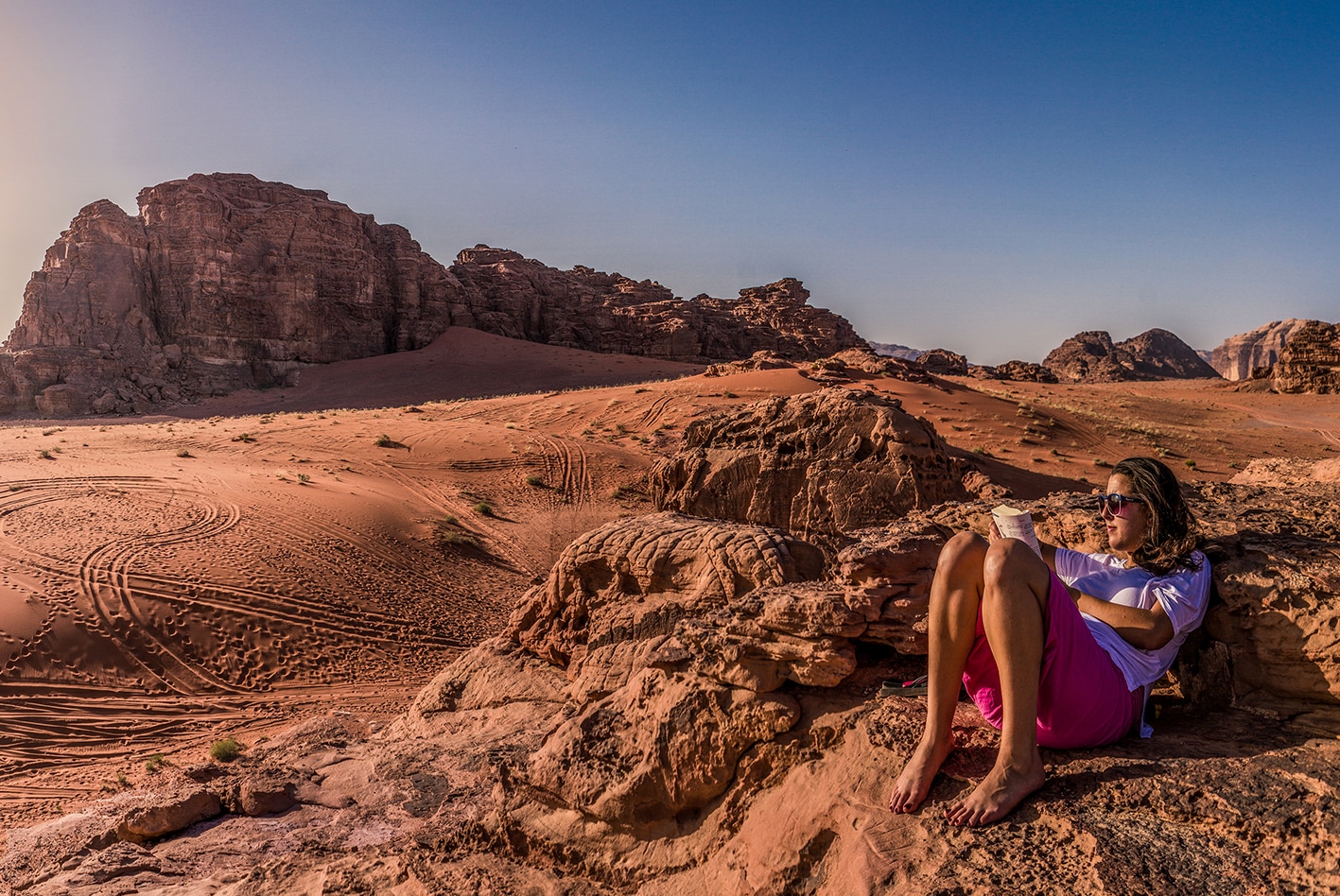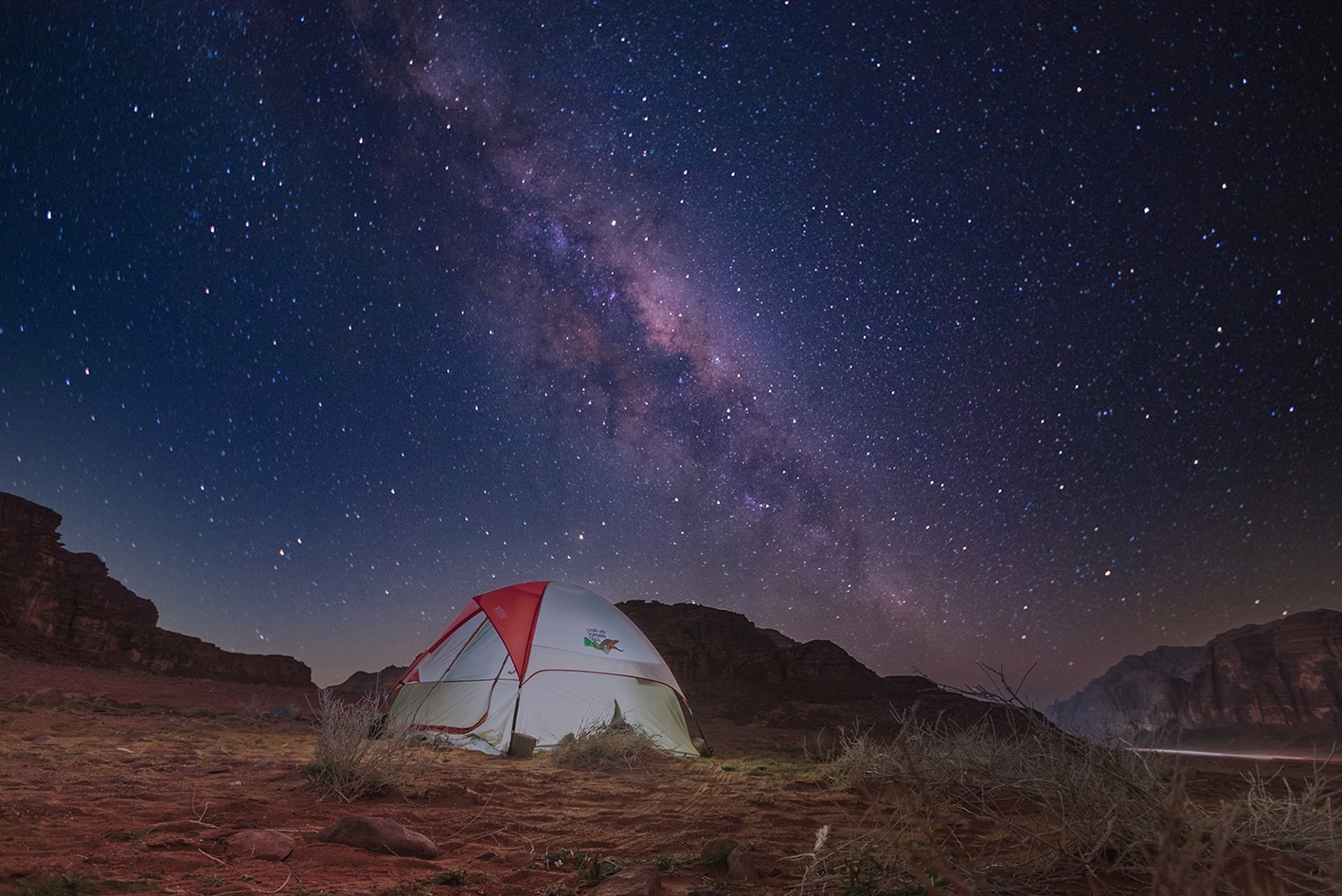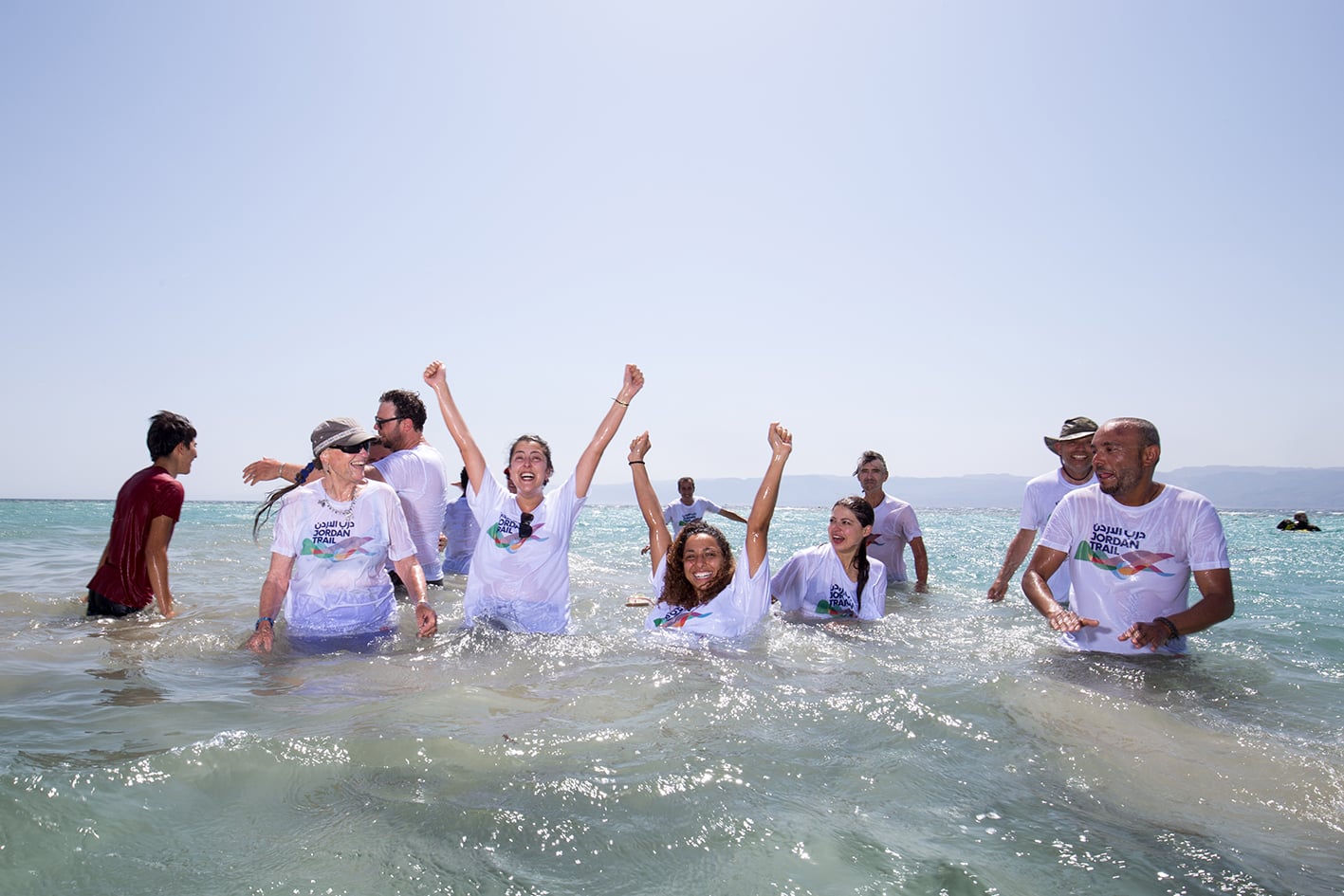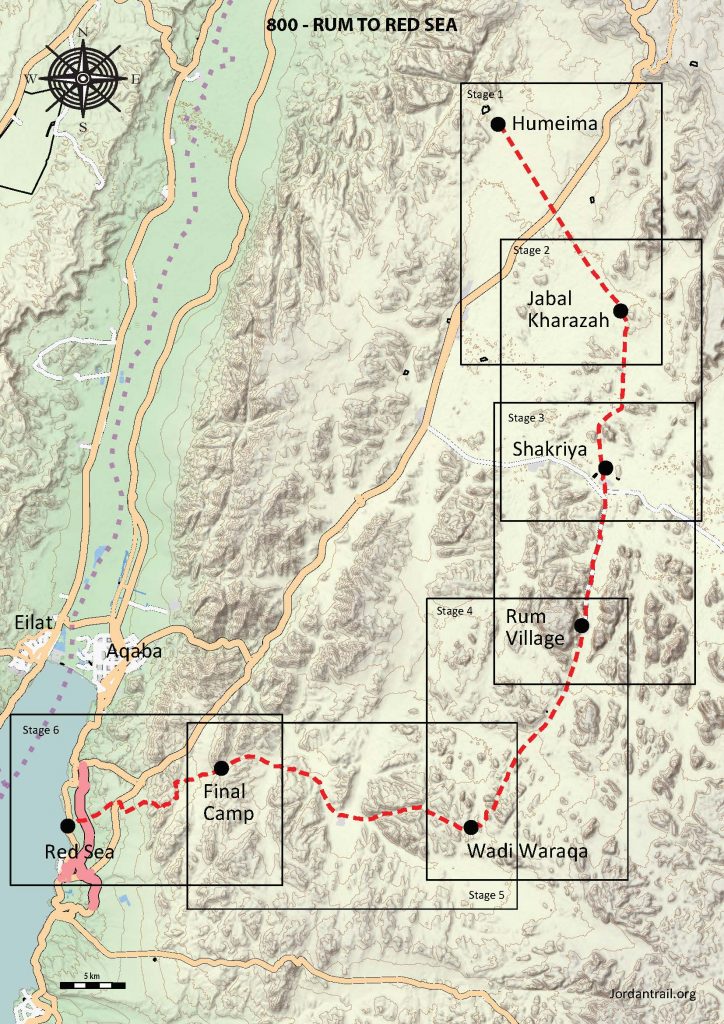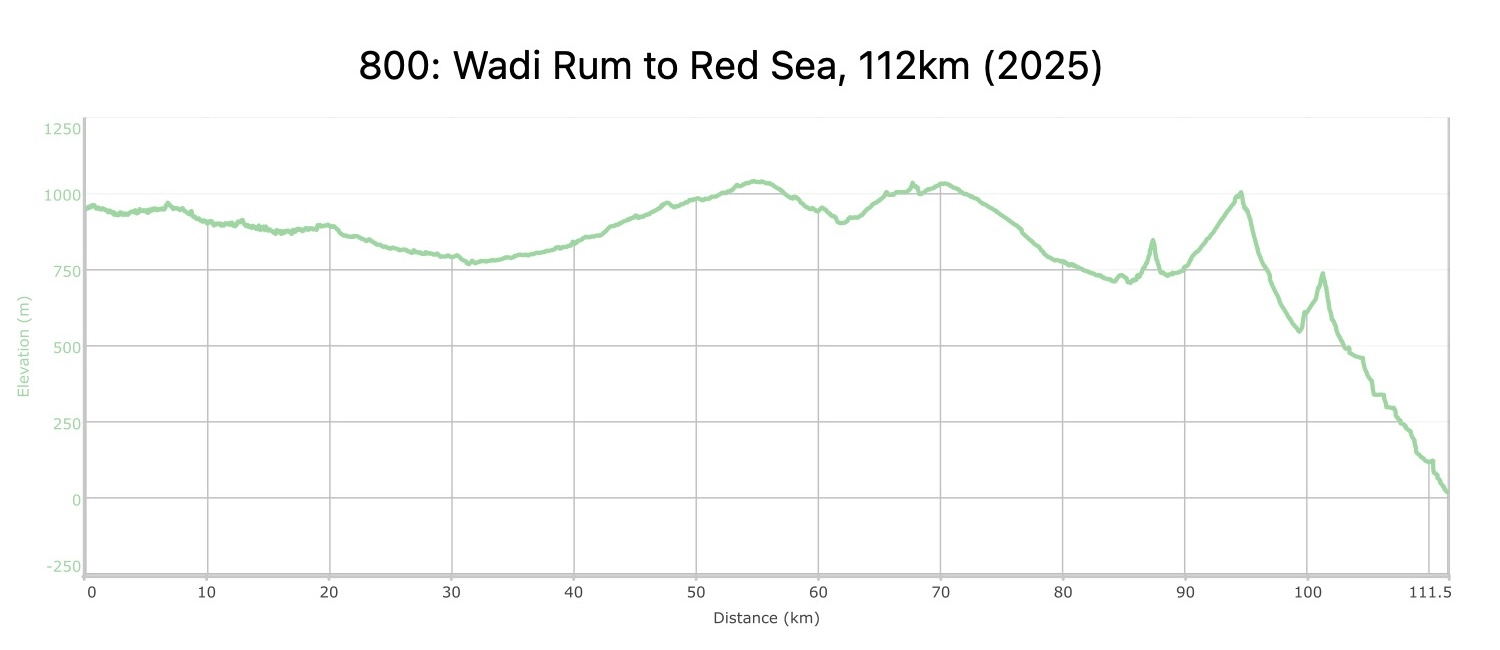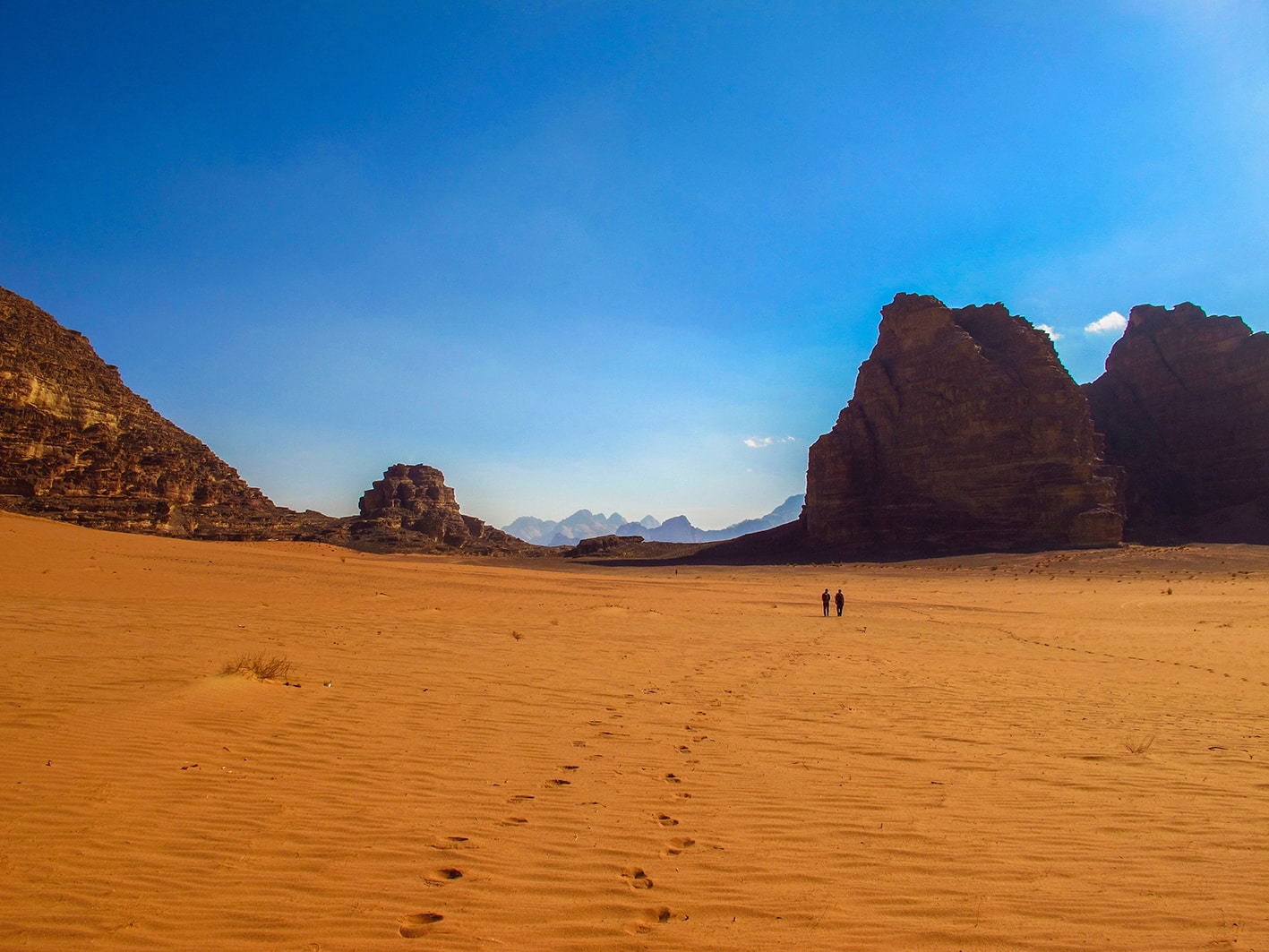Aside from Wadi Rum and the city of Aqaba, this region is not reachable by public transit – to reach points along the trail you’ll have to drive or hire a taxi or, more likely, a Bedouin driver with a 4-wheel-drive vehicle.
For a major tourist destination, Wadi Rum is somewhat difficult to reach. If not driving, you’ll have to find one of the few daily buses that reach it or take a bus running along the desert highway and then walk or try to catch a taxi the rest of the way.
Rum Village, about 10km down a dead-end road past the Visitors’ Center, contains a few shops and the Rest House (a cheap restaurant and accommodation option); Jeep tours taking you to a desert camp will leave from the Visitors’ Center. Both points are on the Jordan Trail route.
As mentioned on Jordan Jubilee, the most exhaustive and updated resource for travelers, a daily tourist bus (arranged by hotels) runs in the early morning from Petra to Wadi Rum and then back again; and a once-a-week luxury JETT bus runs from Amman to Wadi Rum on Thursday night. Given the general unreliability of transportation in remote locations, travelers should not depend on these buses when leaving Wadi Rum but should instead plan to hire private transport.
If finding public transit all the way to Wadi Rum is too tricky, your other option is to take any public bus (not JETT or a tourist bus!) that runs along the Desert Highway (for example, between Amman and Aqaba) and disembark at Rashidiya Junction. From here, you must find private transportation or walk along the road heading east to Wadi Rum and Diseh.
Aqaba, being a major city, is easy to reach by bus from anywhere that has buses; and transportation within the city is easy and cheap through green local taxis.
There is no public bus leading to the southern terminus of the trail along the Red Sea shore; you’ll need a taxi from Aqaba for pick-up or drop-off.
For more information on transportation in Jordan, click here.



